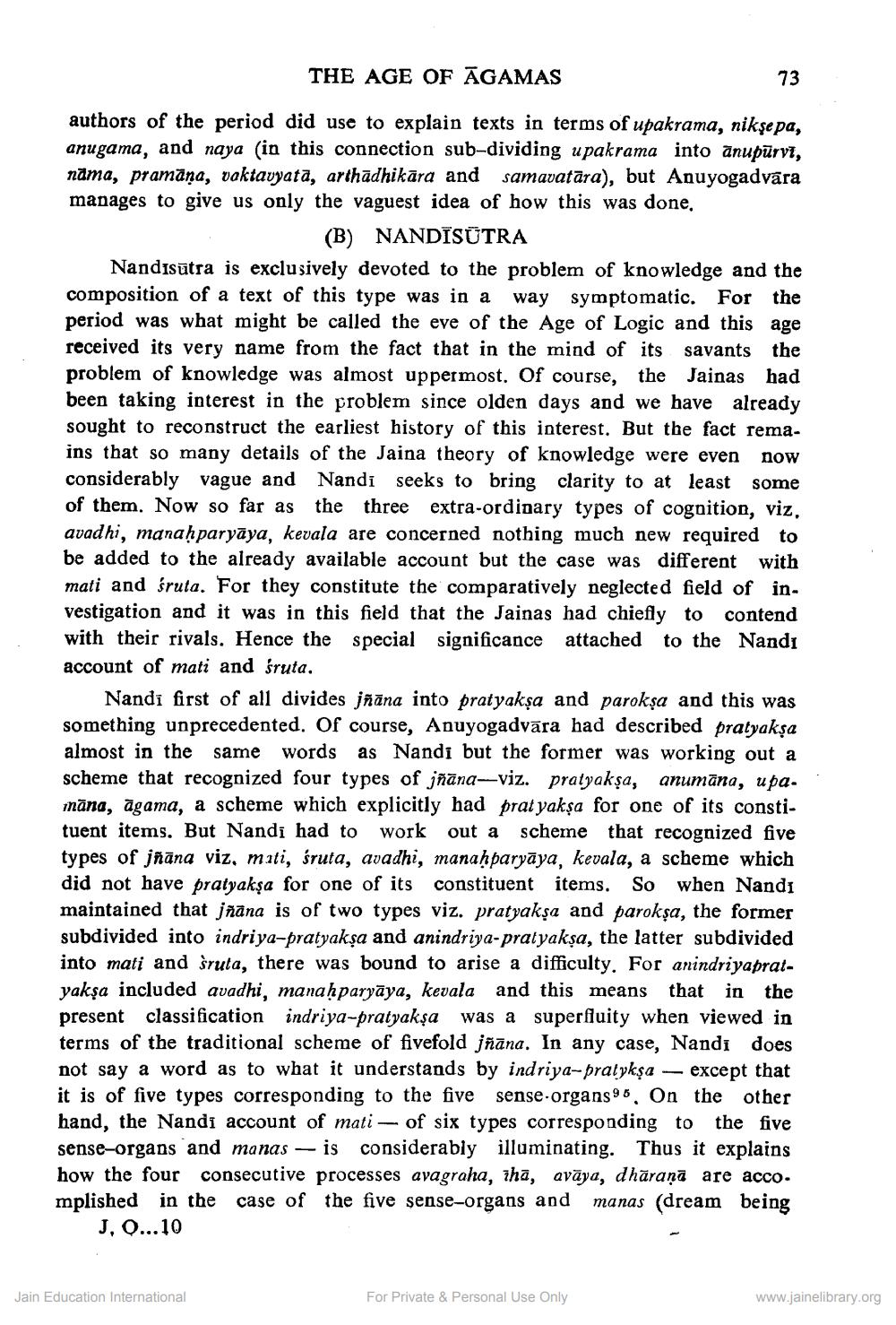________________
THE AGE OF ĀGAMAS
73
authors of the period did use to explain texts in terms of upakrama, nikşe pa, anugama, and naya (in this connection sub-dividing upakrama in nama, pramāna, vaktavyata, arthādhikāra and samavatāra), but Anuyogadvāra manages to give us only the vaguest idea of how this was done.
(B) NANDĪSŪTRA Nandisutra is exclusively devoted to the problem of knowledge and the composition of a text of this type was in a way symptomatic. For the period was what might be called the eve of the Age of Logic and this age received its very name from the fact that in the mind of its savants the problem of knowledge was almost upper most. Of course, the Jainas had been taking interest in the problem since olden days and we have already sought to reconstruct the earliest history of this interest. But the fact rema. ins that so many details of the Jaina theory of knowledge were even now considerably vague and Nandi seeks to bring clarity to at least some of them. Now so far as the three extra-ordinary types of cognition, viz. avadhi, manah paryāya, kevala are concerned nothing much new required to be added to the already available account but the case was different with mati and śruta. For they constitute the comparatively neglected field of in. vestigation and it was in this field that the Jainas had chiefly to contend with their rivals. Hence the special significance attached to the Nandi account of mati and śruta.
Nandi first of all divides jñāna into pratyaksa and paroksa and this was something unprecedented. Of course, Anuyogadvāra had described pratyaksa almost in the same words as Nandi but the former was working out a scheme that recognized four types of jñāna-viz. pratyakşa, anumāna, upa. iāna, āgama, a scheme which explicitly had prat yakşa for one of its constituent items. But Nandi had to work out a scheme that recognized five types of jñāna viz, mati, śruta, avadhi, manahparyāya, kevala, a scheme which did not have pratyakşa for one of its constituent items. So when Nandı maintained that jñāna is of two types viz. pratyakşa and parokşa, the former subdivided into indriya-pratyaksa and anindriya-pratyakşa, the latter subdivided into mati and sruta, there was bound to arise a difficulty. For anindriyapratyakşa included avadhi, manahparyāya, kevala and this means that in the present classification indriya-pratyaksa was a superfiuity when viewed in terms of the traditional scheme of fivefold jñāna. In any case, Nandi does not say a word as to what it understands by indriya-pralyksa - except that it is of five types corresponding to the five sense organs95. On the other hand, the Nandi account of mati — of six types corresponding to the five sense-organs and manas - is considerably illuminating. Thus it explains how the four consecutive processes avagraha, iha, avāya, dhāraņa are acco. mplished in the case of the five sense-organs and manas (dream being
J, Q...10
Jain Education International
For Private & Personal Use Only
www.jainelibrary.org




